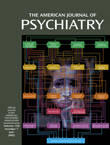Abstract
OBJECTIVE: Oct-6, a POU-III domain transcription factor, is expressed in embryonic stem cells and Schwann cells and in neuronal subpopulations during early mammalian development, but its relevance to disorders of cerebral development in humans is untested. This study evaluated the expression of Oct-6 in schizophrenia, a disorder that has been linked with neurodevelopmental abnormalities. METHOD: Immunohistochemistry was used to examine Oct-6 expression in the temporal lobe in postmortem tissue from 10 subjects with schizophrenia and 10 matched comparison subjects. Western blot analysis was used to study Oct-6 expression in the frontal and temporal cortex in tissue from an additional three schizophrenic and three matched comparison subjects and in the frontal lobe only in tissue from an additional 10 schizophrenic and 10 matched comparison subjects. RESULTS: Extensive Oct-6 immunoreactivity was present in the temporal lobe in all 10 schizophrenic subjects, while very little or no expression was found in the comparison subjects. In schizophrenic subjects, Oct-6 immunoreactivity was found in a subset of cells in the pyramidal cell layer of the hippocampus and in the granule cell layer of the dentate gyrus. Oct-6 staining was predominantly localized in the cytoplasm. Western blot analysis confirmed the presence of Oct-6 in the frontal and temporal cortex in schizophrenic subjects but not in comparison subjects. CONCLUSIONS: The presence of Oct-6 expression in the schizophrenic subjects but not in the comparison subjects suggests that Oct-6 may provide a marker for the neuropathology associated with schizophrenia. Further, it may provide a clue to the neurodevelopmental basis of the disease and could be a reliable means to examine the developmental brain abnormalities described in this disorder.



